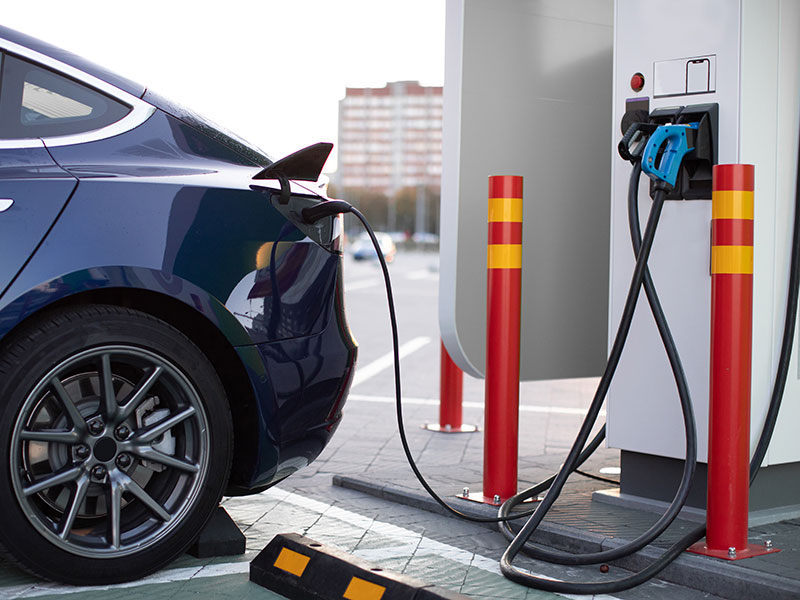For years, range anxiety and charging concerns have been among the most significant barriers to widespread electric vehicle (EV) adoption. However, the rapid expansion of fast-charging infrastructure is transforming the EV landscape, addressing consumer hesitations and reshaping how electric car owners approach long-distance travel.
Breaking Down the Charging Barrier
The correlation between charging infrastructure and EV adoption rates is undeniable. Markets with robust charging networks consistently demonstrate higher electric vehicle penetration. This relationship works through several mechanisms:
Reduced Range Anxiety: Fast-charging stations placed strategically along highways and in urban centers help alleviate the fear of being stranded with a depleted battery. When drivers know they can quickly add significant range in 15-30 minutes, the psychological barrier of range anxiety diminishes considerably.
Apartment Dweller Accessibility: Not everyone has access to home charging. The development of convenient public fast-charging networks makes EV ownership viable for the significant portion of the population living in multi-unit dwellings without dedicated parking or charging capabilities.
Visible Investment Signals: The visible deployment of charging infrastructure sends powerful market signals about the future of transportation. When consumers see charging stations becoming commonplace, it reinforces the viability of electric mobility and encourages consideration of EVs for their next vehicle purchase.
The Road Trip Revolution
Perhaps nowhere is the impact of fast-charging infrastructure more evident than in the transformation of the electric road trip experience:
Strategic Corridor Development: Early charging networks focused primarily on urban centers. Today’s expansion strategies prioritize highway corridors, creating connected routes that enable seamless long-distance travel. Major initiatives like the National Electric Vehicle Infrastructure (NEVI) program in the US are specifically targeting gaps along interstate highways.
Charging Speed Advancements: The evolution from 50kW to 350kW+ charging speeds has dramatically reduced stopping times. What once required hour-long stops can now be accomplished in 15-20 minutes—just enough time for a restroom break and quick refreshment, aligning closely with typical ICE vehicle road trip patterns.
Integration with Amenities: The most successful charging locations are increasingly integrated with desirable amenities—restaurants, shopping, and clean facilities. This integration transforms charging from an inconvenience into a natural part of the journey, sometimes even enhancing the road trip experience.
Regional Success Stories
The effectiveness of charging infrastructure in driving adoption is perhaps best illustrated through regional success stories:
Norway’s Comprehensive Approach: Norway’s world-leading EV adoption rates (over 80% of new car sales) correlate directly with their early and substantial investment in charging infrastructure. Their comprehensive network ensures that no major highway is without fast-charging options.
California’s Corridor Strategy: California has demonstrated how targeted corridor development can open entire regions to electric travel. By ensuring charging availability along key routes like I-5 and Highway 101, the state has created viable electric corridors connecting major population centers.
China’s Scale Deployment: China’s massive deployment of over 760,000 public charging stations has supported the world’s largest EV market, demonstrating how infrastructure investment can accelerate adoption at scale.
Challenges and Opportunities Ahead
Despite significant progress, several challenges remain in developing truly comprehensive fast-charging infrastructure:
Grid Capacity: High-power charging stations place substantial demands on local electrical grids. Future deployments will increasingly require strategic grid reinforcement or integration with battery storage to manage peak loads.
Rural Coverage Gaps: While major highways and urban centers increasingly have adequate coverage, rural areas and secondary roads often lag behind. Addressing these gaps will be crucial for complete transportation electrification.
Reliability Concerns: Charging station uptime and reliability remain inconsistent across networks. As EVs become mainstream, the expectation for charging reliability will approach that of traditional fueling—near 100% availability.
Standardization: Despite progress with CCS becoming the dominant connector in many markets, connector and payment standardization issues continue to complicate the charging experience.
Economic and Policy Considerations
The development of fast-charging infrastructure exists at the intersection of market forces and policy interventions:
Public-Private Partnerships: Most successful charging networks have emerged through collaborative models where public funding helps establish baseline coverage, while private investment drives expansion and operation.
Utilization Challenges: Early charging stations often struggle with low utilization rates as EV adoption catches up with infrastructure deployment. This “chicken-and-egg” dilemma requires policy support to bridge the initial economic gap.
Utility Involvement: Electric utilities are increasingly seeing charging infrastructure as both a grid management challenge and a significant new market opportunity. Their involvement is proving crucial for addressing the technical aspects of high-power charging deployment.
Conclusion: The Virtuous Cycle
As fast-charging infrastructure expands, it creates a virtuous cycle for EV adoption. Better charging options reduce barriers to purchase, which increases EV populations, which improves charging station economics, which enables further expansion. This self-reinforcing pattern suggests that once certain threshold levels of both infrastructure and adoption are reached, markets can tip toward accelerated electrification.
The transformation of the road trip experience serves as perhaps the most visible indicator of this progress. When electric vehicles can not only match but potentially enhance the quintessential road trip experience—offering convenient stops, lower operating costs, and a quieter, smoother ride—a significant psychological barrier to adoption falls away.
The future of fast-charging will likely see continued integration with broader transportation and energy systems—from renewable energy generation to grid services and autonomous vehicles. As these systems evolve together, the impact of charging infrastructure will extend far beyond simply enabling EV adoption to fundamentally reshaping how we think about mobility, energy, and the connections between them.

Leave a Reply